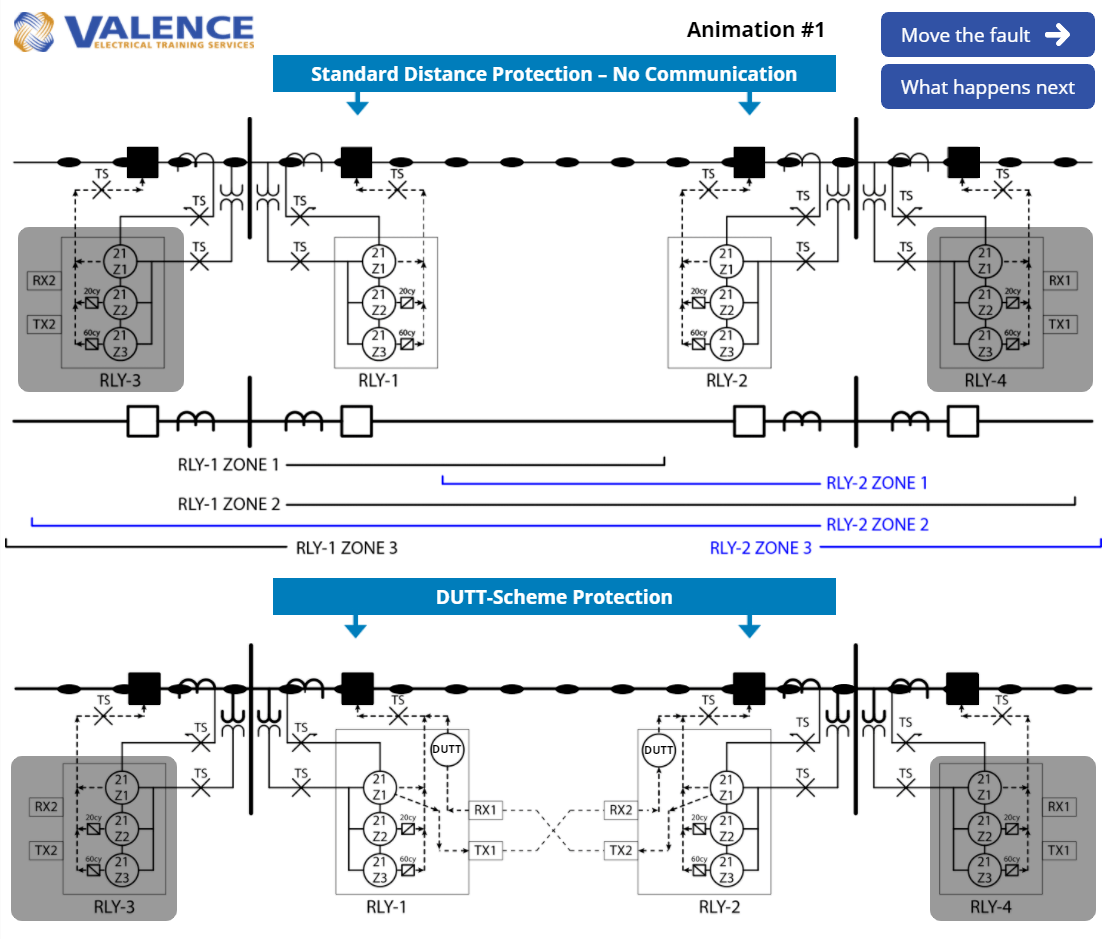No products in the cart.
Can You Predict What Happens in a Direct Under-Reaching Transfer Trip (DUTT) Scheme?
The Relay Testing Handbook: End-to-End Testing covers the most common Communication-Assisted Protection Schemes including the Direct Under-Reaching Transfer Trip (DUTT) Scheme. This bonus animation shows the steps involved for a DUTT trip.
End-to-end testers should understand how this scheme operates before they test it and this animation was created to help relay testers understand distance relay principles.
See if you can accurately predict what will happen at different fault locations with a Direct Under-Reaching Transfer Trip (DUTT) Scheme.
Click on the following image to open an animation to see if you can accurately predict what will happen at different fault locations with a Permissive Over-Reaching Transfer Trip (POTT) Scheme.
Press “What happens Next” to move through the animation. Press “Move the Fault” to change the fault location.

Did you like this post?
You can share it with these links:
Read More Articles:
Can You Predict What Happens in a Permissive Over-Reaching Transfer Trip (POTT) Scheme?

Why in animation 3 and 4 do relays 3 and 4 not operate to clear the fault in their zone 1?
We’re pretending that someone forgot to turn the battery charger back on after testing the batteries to show how relays 1 and 2 provide backup protection if relays 3 and 4 fail.
Good question.